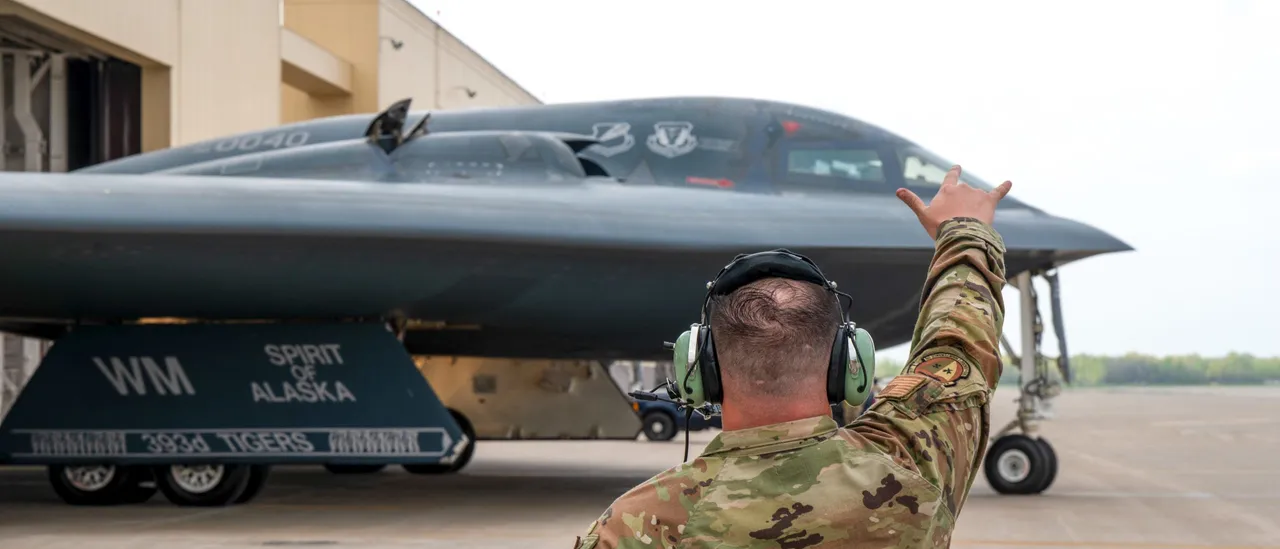‘It Was Our Super Bowl’: Inside The Thousand-Man Operation That Obliterated Iran’s Nuclear Dreams
By Wallace White
Copyright dailycaller

WHITEMAN AFB, Mo. – It was a muggy night under moonlight at Whiteman Air Force Base in the heart of Missouri. The base, home to America’s arsenal of B2 long-range stealth bombers, was about to have its most important mission in two decades.
Once the clock struck midnight and turned over to a new day, seven bombers lifted off into the night carrying a combined 420,000 pounds of ordnance intended to cripple Iran’s burgeoning nuclear program.
“15 years of development to make sure that weapon hits a specific place at a specific time… and for us to do this, for us, it was our Super Bowl,” Chief Master Sergeant Frank Espinoza, head of the 509th Bomber Wing Maintenance Group, told the DCNF.
Behind the scenes, thousands of regular rank and file airmen at Whiteman AFB were preparing for weeks for the operation, and leaders involved in the strike told the Daily Caller News Foundation that each man and woman had a part to play in its success, no matter how small. The DCNF spoke with Whiteman personnel to understand their now-flagship claim to fame.
The B2 cockpit is no bigger than a bathroom stall. For 37 hours, the pilots had to rotate in shifts to keep the massive bomber in the air while engaging in multiple air refueling maneuvers during the long journey. In order to catch any sleep, a pilot must lay their head down next to an onboard chemical toilet while uncomfortably propping their feet against the fuselage of the craft.
One of the traits required to be selected to fly the stealth bomber is the ability to endure long flights. Another is the ability to operate with extreme secrecy, a necessity given the base’s relative isolation and the B2’s often clandestine mission set.
“You’re looking for somebody who’s able to do both the nuclear and a conventional mission set,” Col. Joshua Wiitala, commander of the 509th Bomb Wing, told the DCNF. “You’re also looking for somebody who you can fly with for 35 hours and work as a team effectively, so there’s kind of a personality that you’re looking for there.”
In order to endure on the grueling missions, pilots will often bring a cooler with refreshments inside. One pilot on Midnight Hammer brought a cooler full of energy drinks during his flight, returning home as if he was “ready to go again,” Espinoza told the DCNF.
Pilots first train with the 13th Bomber Squadron, known as the “Reapers” and “the Devil’s Own.” The candidates will cut their teeth logging hundreds of hours in state-of-the-art simulators before taking their first flight with the real aircraft. Once their training is done, they usually move into a mission-ready bomber squadron, such as the 393rd. (RELATED: Iran No Longer Has ‘Identifiable Route’ To Produce Weapons-Grade Uranium After Strikes, Nuclear Experts Conclude)
Operation Midnight Hammer’s origins stretch back to 2009, when the Defense Threat Reduction Agency (DTRA) first began covertly surveying Iran’s Fordow Nuclear Site. The agency determined that a new weapon would need to be developed to specifically target the site. The GBU-57 Massive Ordnance Penetrator (MOP) was designed and created with Fordo in mind.
In order for the MOP to be effective, maintenance and munitions personnel have to set the fuses just right to ensure maximum damage to the target. The men responsible for preparing the weapon had drilled incessantly on a mock B2 bay to ensure when the call came, there would not be one single error.
“There’s a lot of detail-oriented tasks that have to happen to do that right, because you have to get it right the first time,” Espinoza told the DCNF. “When you’re moving that trailer and getting it into the bay, there’s a lot of precision that goes into that. That’s why we practice every month, every month we practice putting these munitions on the aircraft.”
It takes 21 days to certify an airman with all the munitions in the B2’s arsenal, Espinoza told the DCNF. After certification, practice runs do not end, and are essential to keeping the crews calm when the time comes.
“You build muscle memory, you build proficiency. And so when that phone call comes in, everybody’s just on muscle memory, automatic mode,” Espinoza told the DCNF.
The GBU-57 is a GPS-guided munition that auto-adjusts its course in flight by use of an Inertial Navigation System (INS). Upon landing, the bomb is able to penetrate the ground up to 200 feet.
After the bombs hit, multiple agencies and governments confirmed the Iran nuclear program was severely damaged in the operation, despite some initial skepticism stemming from a leaked preliminary Defense Intelligence Agency report alleging the strikes did minimal damage to Iran’s nuclear hopes. (RELATED: How The US Crippled Iran’s Nuclear Program In One, Clandestine Attack)
The Aftermath
After the B2s set off from the base, all the crews could do was wait in silence. But when the planes returned home, there was cause for celebration. When the pilots disembarked from their bombers, they were quickly greeted by base personnel storming the tarmac.
“I hugged the lead pilot when he came out of the aircraft,” Espinoza told the DCNF. “It’s just one of those things where we all feel that sense of accomplishment, you know, getting everything done, all the things that you work so hard for and sacrifice.”
Once the mission was complete, all the personnel involved could finally reveal to their families what their mission was. Before the strike took place, no personnel were permitted to discuss the mission with their own families or anyone else outside the base.
Operational security is especially emphasized at Whiteman AFB due to the presence of the B2 and its comparatively isolated location.
“We really emphasize that ‘low observable culture,’” Wiitala told the DCNF. “So that’s strict operational security. It’s not talking about our business outside of work, it’s not putting anything on social media. And that’s something I’m exceptionally proud of this team, and I think it’s a big takeaway in this mission. It was just our team absolutely kept the highest degree of operational security across the board.”
For all the personnel involved in the operation, their efforts displayed on every newscast in the world was a point of pride, and greatly boosted base morale. Now, being stationed at Whiteman AFB is a badge of honor in the eyes of the airmen and the world outside the secretive enclave in rural Missouri.
“Our airmen sacrifice so much time, personal time, to train, to prepare to do these missions,” Espinoza told the DCNF. “And so when you see that come to fruition, it just validates all those things.”
All content created by the Daily Caller News Foundation, an independent and nonpartisan newswire service, is available without charge to any legitimate news publisher that can provide a large audience. All republished articles must include our logo, our reporter’s byline and their DCNF affiliation. For any questions about our guidelines or partnering with us, please contact licensing@dailycallernewsfoundation.org.



